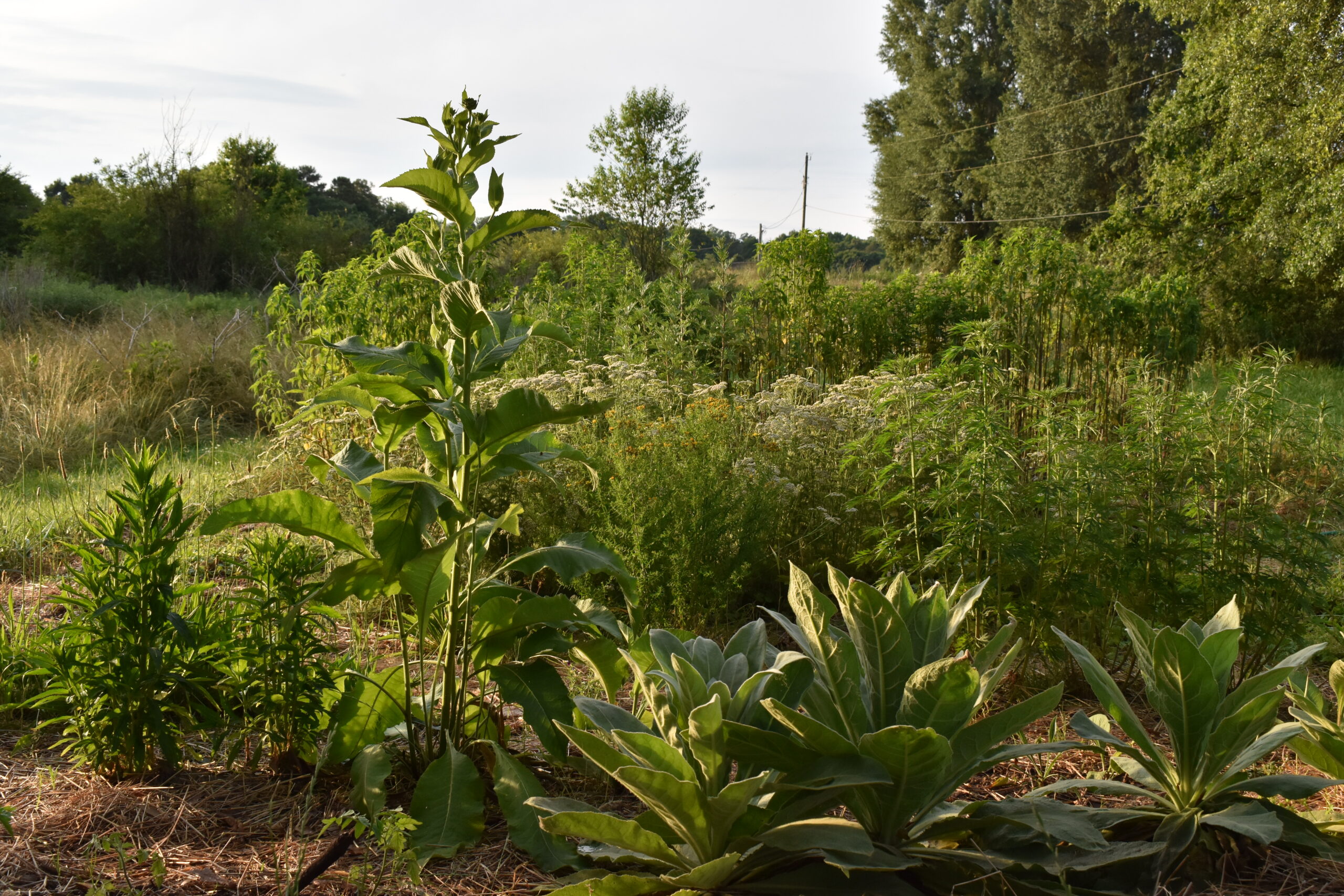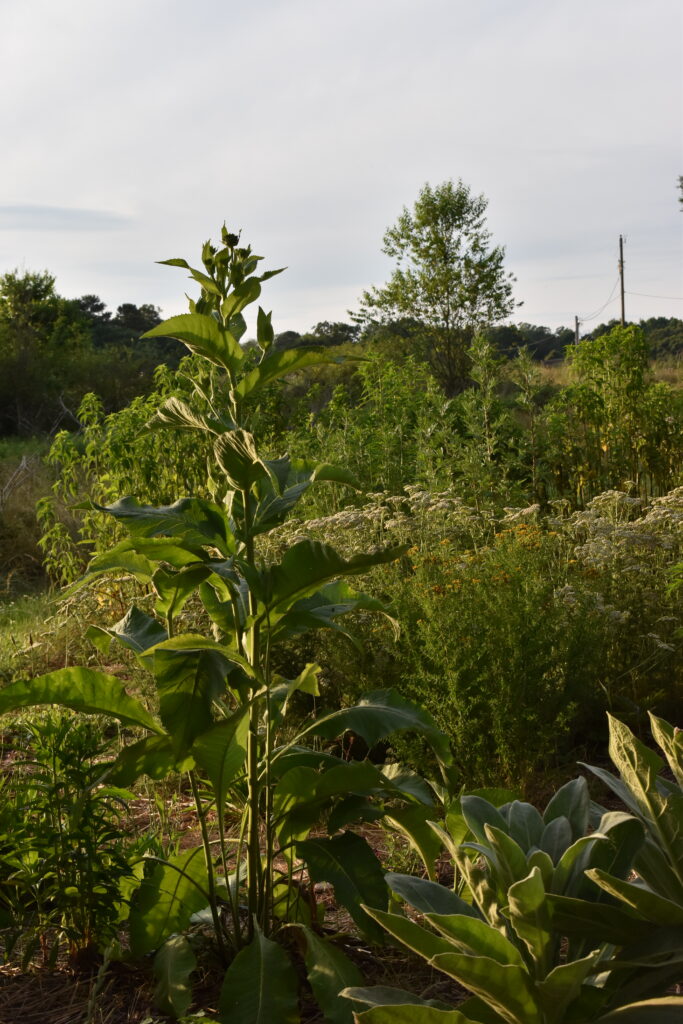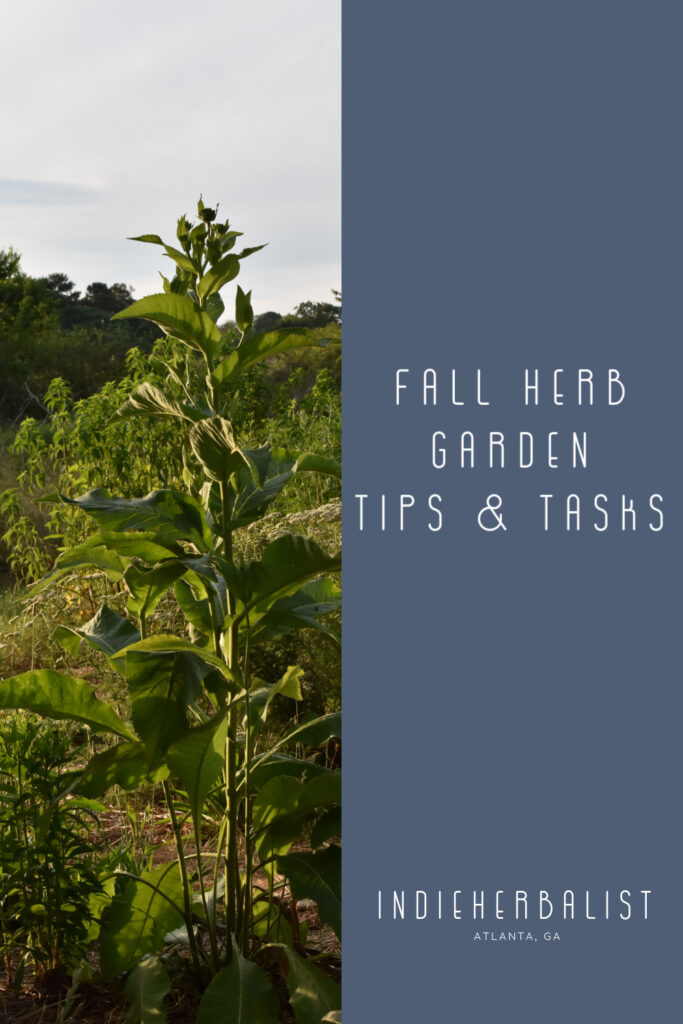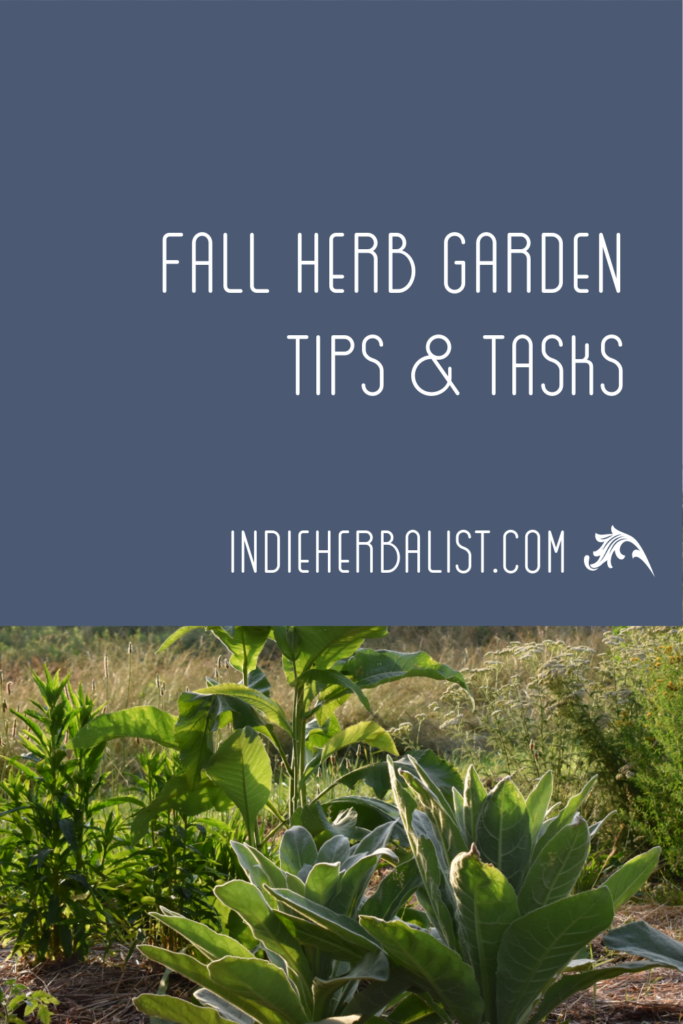Links contained in this post and elsewhere on my website may include affiliate links. When you make a purchase through these links, I earn a commission at no additional cost to you. I only link to products and services that I love - and that I think you will love, too!
Herb gardening is all about timing and cycles. Autumn transitions the garden between busy summers and peaceful winters. These tips and tasks for fall herb gardens will help boost the health and vitality of plants the following spring.
We have a zone 7 garden, and late summer and fall can be a bit of a slump in terms of harvesting. Generally, herbs harvested for their leaves are best to cut right before blooming. If you have been pinching back the tops on your herbs to delay bloom and encourage the plants to fill out and produce more leaves, some of your herbs may almost be ready for harvest.
For the most part, though, this is a slower time when most of the annual herbs are spent and a few perennial herbs are either coming into a second bloom after a first harvest or just getting ready to bloom for the first time. Most perennial herbs have completed blooming for the year and are already focused on building up their roots for the coming winter.
Even though there isn’t much to harvest, this slower time of year is perfect for cleaning up the garden and getting ready for fall. It can be a good time to plant seeds that require stratification (alternating warm and cool temperatures), try to sneak in a second fall planting of annuals like calendula (and a fall veggie garden, for that matter!), or prep any garden beds that you would like to use for fall-planted perennial roots.Wondering what to do in your own herb garden this time of year? Here are some of the tasks I like to work on and some of my best tips to help you out!
Stay ahead of the weeds
If you are using organic methods for your garden, this is usually an easier time of year for controlling weeds, but that doesn’t mean you can rest! Most weeds have slowed down because of the heat. If you have been careful to take care of any weeds before they set seed then you shouldn’t be fighting with fresh seeds ready to pop up – but weed seeds can persist in garden soil for years, so it’s an ongoing battle. Use a hoe or a hand tool to gently cultivate around your plants to discourage any weedlings that you notice.
Collect seeds from fall herb gardens
Late summer is often the perfect time for collecting seeds from your plants. Deadheading (removing spent blooms) earlier in the year helps your plants stay healthy and may encourage them to re-bloom, but now you can leave the flowers on the plants and allow them to set seed. Although I like to collect some of my seeds and keep them in envelopes until spring, you can also fall sow your fresh seeds or leave the seed heads on the plants all winter for wildlife.
Clean out the garden beds
Annual herbs have most likely died back by now if you started them early in the spring. Now is a good time to clean out those beds and add compost or other soil amendments if needed. Adding a little organic matter like leaves, grass clippings, or manure directly into the beds and turning it under, then letting the beds rest until spring is another option. Doing so can help improve soil quality over time, especially if you have heavy clay soil. Just remember that plants may not do well in these beds until spring – the manure and plant matter will need time to decompose before the bed will be ready to plant.
Plant perennial roots
August and September tend to be good months for planting perennial herbs seedlings with strong root systems. Plants like echinacea, black cohosh, and elecampane are some examples. The weather is a little less scorching, for one thing, but there is also enough time for the plants to get settled in before going dormant for the winter. In my experience, fall planting allows them to bounce back in the spring and they are healthier than spring-divided plants. You can either plant out or transplant seedlings that you started in the spring, or purchase your live roots this time of year without worrying that hot weather will hurt your tender seedlings. If you’re curious, my favorite place to buy medicinal herbs is from Strictly Medicinal Seeds. I’m not an affiliate for them, but I’ve used them for years and love them. They always have the healthiest plants!
Divide perennial herbs
Fall is the time to make more plants from what you already have, too! If you have some herbs that you’ve been wanting to split up and move to other areas, fall is a great time to do that. Late August and September are my favorite time to divide and move plants around as long as we have been getting enough rain. During a dry year, I leave things where they are. Having less water than usual stresses plants out. Moving them around when they are already stressed isn’t a good idea. Stressed plants won’t thrive, and may even die.
Mulch for fall herb gardens
Mulching your beds again with leaves or bark is a nice way to tidy them up for fall. Just remember that pine straw is very acidic and oak leaves contain compounds that inhibit the growth of other plants – so these two materials are probably not the best for your herb garden even if you have an abundant supply. Mulch helps retain moisture, adds a layer of insulation for your plants, and helps somewhat with weed suppression. Over time, mulch breaks down and adds organic matter to the soil – making for happy soil and happy plants!





